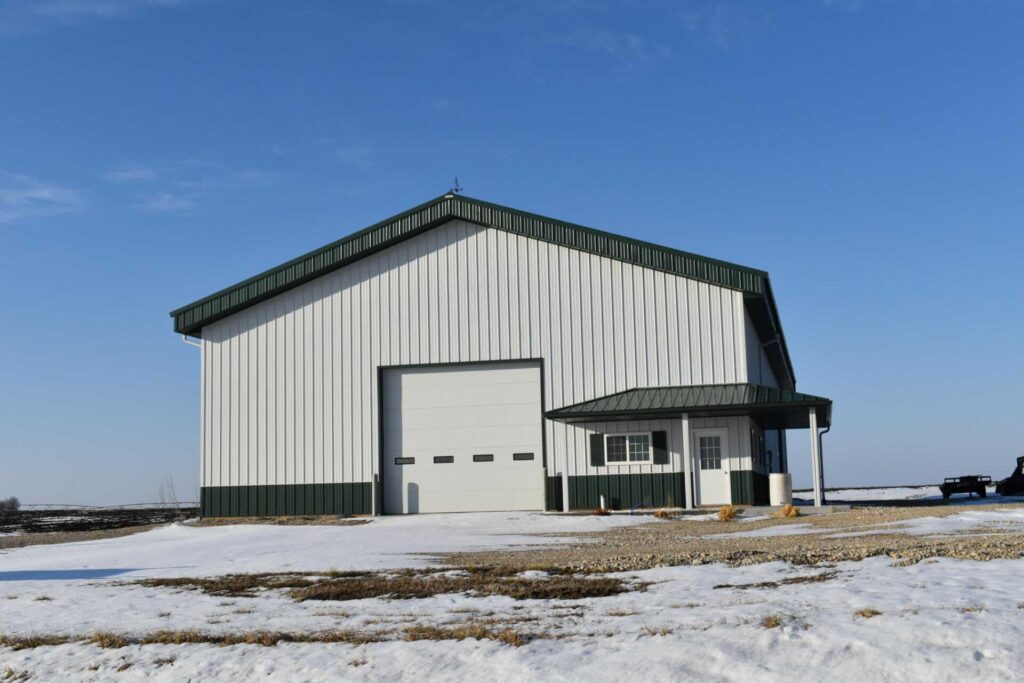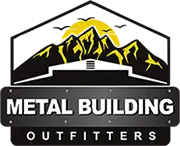
Contents
When it comes to selecting the construction method for your warehouse, choosing energy-saving metal construction can bring a host of advantages to the table. From improved operational efficiency to eco-friendly practices that resonate with today’s environmentally conscious consumers, the benefits are vast. However, one essential aspect often gets overlooked, a factor that can greatly impact your bottom line and set you apart in a competitive landscape. Curious to know more? Let’s explore why energy-saving metal warehouse construction might just be the strategic move your business needs.
Key Takeaways
- Achieve significant cost savings and energy reduction.
- Enhance insulation for stable temperatures and lower energy bills.
- Qualify for tax incentives and rebates, saving more money.
- Reduce environmental impact with optimized resource usage.
- Increase property value, attract eco-conscious tenants, and gain a competitive edge.
Cost Savings
By employing energy-saving metal warehouse construction methods, you can achieve notable cost savings in the long run. Through the incorporation of advanced insulation materials and efficient HVAC systems, energy savings can be realized compared to traditional warehouse construction. These energy-saving features contribute to a more environmentally friendly setting and also lead to substantial financial benefits for your business.
When considering the financial advantages of energy-efficient metal warehouse construction, it’s crucial to acknowledge the long-term cost savings linked to decreased energy consumption. By investing in high-quality insulation and energy-efficient lighting systems during the construction phase, you can significantly reduce your operational expenses over the lifespan of the warehouse. Lower energy bills mean more money saved, which directly impacts your bottom line.
Furthermore, energy-efficient warehouses often qualify for various tax incentives and rebates provided by governmental agencies and utility companies. These financial incentives can further bolster the overall cost savings of your metal warehouse construction project. By utilizing these programs, you decrease your initial construction costs and position your business for continued savings in the future.
Sustainability Benefits
Implementing energy-saving metal warehouse construction methods brings about substantial environmental benefits, enhancing environmental stewardship and reducing carbon footprints. By choosing energy-saving practices, you contribute to a greener future while also reaping the following benefits:
Reduced Emissions: Energy-saving metal warehouse construction notably decreases greenhouse gas emissions. This decrease in emissions helps combat climate change and improves air quality in surrounding areas.
Energy Savings: Using energy-saving technologies and practices in metal warehouse construction results in significant energy savings. This lowers operational costs and diminishes the demand for non-renewable energy sources.
Resource Efficiency: Energy-saving construction methods optimize the use of resources, minimizing waste and advocating for sustainable practices throughout the warehouse’s lifecycle.
Long-Term Environmental Impact: The environmental benefits of energy-saving metal warehouse construction extend far into the future. By reducing carbon footprints and energy consumption, you’re actively contributing to a healthier environment for future generations.
These environmental benefits make energy-saving metal warehouse construction an environmentally responsible choice that aligns with your commitment to reducing environmental impact and promoting sustainable business practices.
Enhanced Insulation Solutions
Improved insulation solutions in metal warehouse construction significantly enhance energy efficiency and reduce heat loss. By incorporating a thermal barrier in the design, heat transfer between the interior and exterior of the warehouse is minimized, leading to significant energy savings.
A thermal barrier acts as a shield, preventing the conduction of heat through the walls and roof, thereby maintaining a stable internal temperature regardless of external weather conditions.
Reflective roofing is another key feature that enhances insulation in metal warehouse construction. By utilizing roofing materials with reflective properties, solar heat gain is reduced, lowering the overall cooling requirements of the warehouse.
Reflective roofing helps in maintaining a comfortable indoor environment by minimizing heat absorption and decreasing the need for constant air conditioning, which in turn results in reduced energy consumption.
These enhanced insulation solutions contribute to energy efficiency and provide a more eco-friendly and cost-effective warehouse construction option.
The combination of a thermal barrier and reflective roofing creates a well-insulated building envelope that effectively retains conditioned air, reduces heat loss, and lowers energy bills.
Reduced Environmental Impact
Reducing the environmental impact of metal warehouse construction involves implementing eco-friendly practices to minimize resource consumption and waste generation. Embracing green building principles is essential in achieving long-term goals and reducing the carbon footprint associated with warehouse operations.
Here are four key ways energy-efficient metal warehouse construction can help minimize environmental impact:
Optimized Material Usage: By using efficient design practices and materials, such as upcycled steel and eco-friendly insulation, you can reduce the overall resources required for construction while promoting a circular economy.
Energy-Efficient Systems: Incorporating energy-saving HVAC systems, lighting, and renewable energy sources can greatly decrease energy consumption, lowering greenhouse gas emissions and operating costs.
Water Conservation: Implementing water-saving plumbing fixtures and rainwater harvesting systems can help reduce water usage within the warehouse, minimizing strain on local water resources.
Waste Management: Establishing proper waste management protocols, including recycling initiatives and construction waste reduction strategies, ensures that the environmental impact of the construction process is minimized, promoting a cleaner and more eco-conscious operation.
Energy-Efficient Lighting Options
To enhance energy efficiency in metal warehouses, choosing lighting alternatives that prioritize eco-friendly practices and cost-effectiveness is essential. Incorporating natural daylighting and LED fixtures can significantly diminish energy consumption while providing a well-lit environment for operations. LED fixtures are recognized for their energy efficiency and durability, making them an economical choice for warehouse lighting.
Moreover, incorporating motion sensor technology can further boost energy efficiency by ensuring lights are only activated when necessary. Skylights are another excellent option to explore, as they enable natural light to penetrate the warehouse during daylight hours, reducing the dependence on artificial lighting.
Below is a table summarizing the key features of these energy-efficient lighting alternatives:
| Lighting Alternative | Key Characteristics | Advantages |
|---|---|---|
| Natural Daylighting | Utilizes natural light sources during the day | Reduces energy expenses |
| LED Fixtures | Energy-efficient and long-lasting lighting solution | Economical and eco-conscious |
| Motion Sensor Tech | Activates lights only when motion is detected | Minimizes energy wastage |
| Skylight Integration | Allows natural light to enter the warehouse | Reduces reliance on artificial lighting |
Long-Term ROI Benefits
Over time, investing in energy-efficient lighting alternatives for metal warehouses can result in substantial long-term savings and increased return on investment. By choosing energy-efficient metal warehouse construction, you can benefit from the following long-term ROI advantages:
Increased Property Value: Energy-efficient lighting solutions enhance the operational efficiency of your warehouse and also contribute to increasing the overall property value. Potential buyers or tenants often seek buildings with low operating costs and eco-friendly features, making your energy-efficient metal warehouse a more attractive investment opportunity.
Lower Operating Costs: Energy-efficient lighting options reduce electricity consumption, leading to lower monthly utility bills. With technologies such as LED lighting and motion sensors, you can improve energy usage and minimize wastage, resulting in significant cost savings over the long term.
Enhanced Market Competitiveness: Investing in energy-efficient metal warehouse construction positions your property as a modern and environmentally conscious facility. This can attract eco-conscious businesses looking to reduce their carbon footprint and operating expenses, giving you a competitive edge in the market.
Long-Term Sustainability: By prioritizing energy efficiency in your warehouse, you contribute to a sustainable future while enjoying ongoing cost savings. This long-term sustainability benefits your bottom line and aligns with global trends towards environmentally responsible practices.
Final Thoughts
By choosing energy-efficient metal warehouse construction, you can save costs, reduce environmental impact, and demonstrate a commitment to sustainability. Imagine your warehouse as an engine running efficiently, using less fuel but producing the same powerful results.
This investment benefits your bottom line and aligns with global trends toward eco-friendly practices. Opt for energy-efficient construction to make the smart choice for your business and the environment.
Recent Posts
What Are Your Options for Agricultural Metal Storage?
When you’re exploring agricultural metal storage options, it’s crucial to take into account the various
How to Choose Versatile Agricultural Metal Structures
When you’re considering versatile agricultural metal structures, it’s essential to start by evaluating your specific
Analyzing Costs of Custom Metal Buildings: A Guide
When it comes to custom metal buildings, costs can be like a puzzle waiting to


